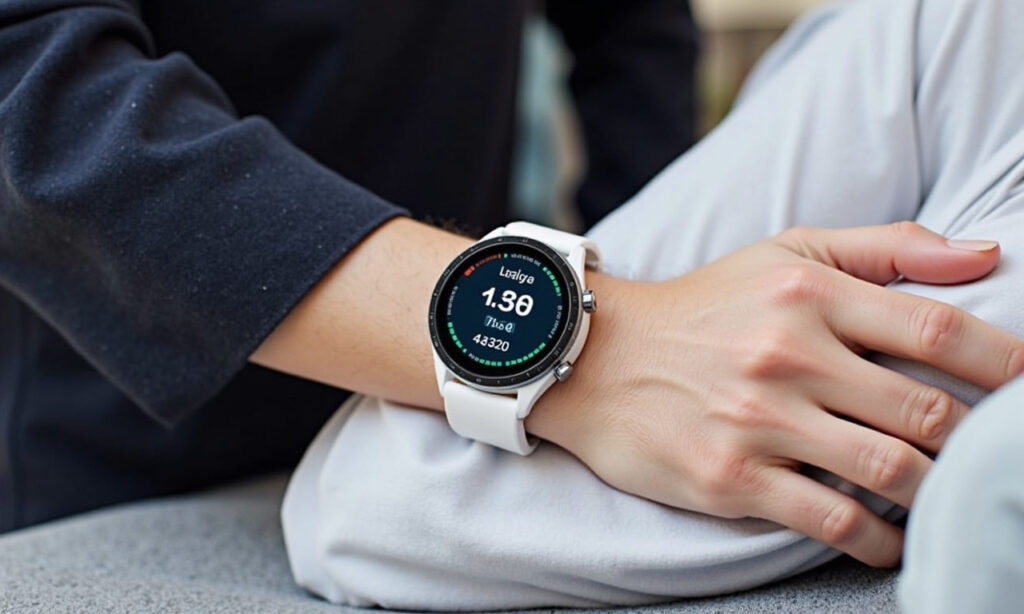In a significant advancement in wearable health technology, Samsung is poised to elevate its Galaxy Watch series by enhancing the sleep apnea detection feature, potentially leveraging AI to move beyond mere detection and into the realm of sleep apnea management.
Partnering for Innovation
Samsung has announced a collaborative research project with Stanford University and Stanford Medicine to explore innovative health solutions based on its obstructive sleep apnea feature. This partnership aims to enhance the current sleep apnea detection capabilities of the Galaxy Watch, with a focus on developing technologies that can support timely interventions and improve sleep health.
Beyond Detection: AI-Driven Management
The current functionality of the Galaxy Watch, including models like the Galaxy Watch Ultra and Galaxy Watch 7, is designed to detect sleep apnea by tracking blood oxygen levels and estimating the apnea-hypopnea index (AHI). However, Samsung’s vision extends far beyond this. By integrating AI technology, the company hopes to empower users with advanced sleep tools that can not only detect sleep apnea but also help manage the condition. This could involve AI-driven insights into sleep patterns, personalized health recommendations, and even preventive measures to mitigate the effects of sleep apnea.
Expanded Global Reach
Samsung’s sleep apnea feature has recently been certified in Brazil, adding to the list of supported territories which now totals 29. This global expansion underscores Samsung’s commitment to addressing a condition that affects over one billion people worldwide, many of whom remain undiagnosed. Sleep apnea, characterized by brief pauses in breathing during sleep, can lead to serious health complications such as hypertension, Type 2 diabetes, and cardiac issues if left untreated.
Advanced Sleep Tracking Features
The latest software update, One UI 6 Watch, brings advanced sleep tracking and health monitoring features to a broader range of Galaxy Watch models. This update includes AI-powered sleep metrics such as movement during sleep, sleep latency, heart rate, and respiratory rate. These enhancements provide users with a deeper understanding of their sleep patterns and overall health, integrating sleep and activity data to offer a holistic view of their physical and mental well-being.
User Experience and Practical Applications
For users, the enhanced sleep apnea detection and potential management features mean a more proactive approach to health monitoring. Here are some practical ways this technology could impact daily life:
Personalized Health Insights
- Users will receive detailed analyses of their sleep patterns, including movement, sleep latency, and heart rate, helping them understand their sleep quality better.
- The Energy Score feature, which combines sleep, activity, sleeping heart rate, and sleeping heart rate variability, provides an intuitive measure of physical and mental well-being.
Timely Interventions
- AI-driven insights could suggest specific interventions or lifestyle changes to help manage sleep apnea, such as sleep position adjustments or breathing exercises.
- Early detection and management can prevent long-term health complications, improving overall quality of life.
Seamless Integration
- The One UI 6 Watch update also enhances the integration with connected Galaxy devices, allowing users to control their smartphone from their watch and receive AI-powered suggested replies, making health monitoring and communication more seamless.
Future Outlook
As Samsung continues to innovate in the health technology sector, the potential for wearables to go beyond mere fitness tracking becomes increasingly evident. With the Galaxy Watch 8 and possibly a new classic model on the horizon, users can expect even more advanced health features that leverage AI to provide comprehensive health monitoring and management.
In conclusion, Samsung’s push into advanced sleep apnea detection and management using AI is a significant step forward in wearable health technology. As this technology evolves, it promises to not only detect health issues but also to empower users with the tools they need to manage and improve their health proactively.
